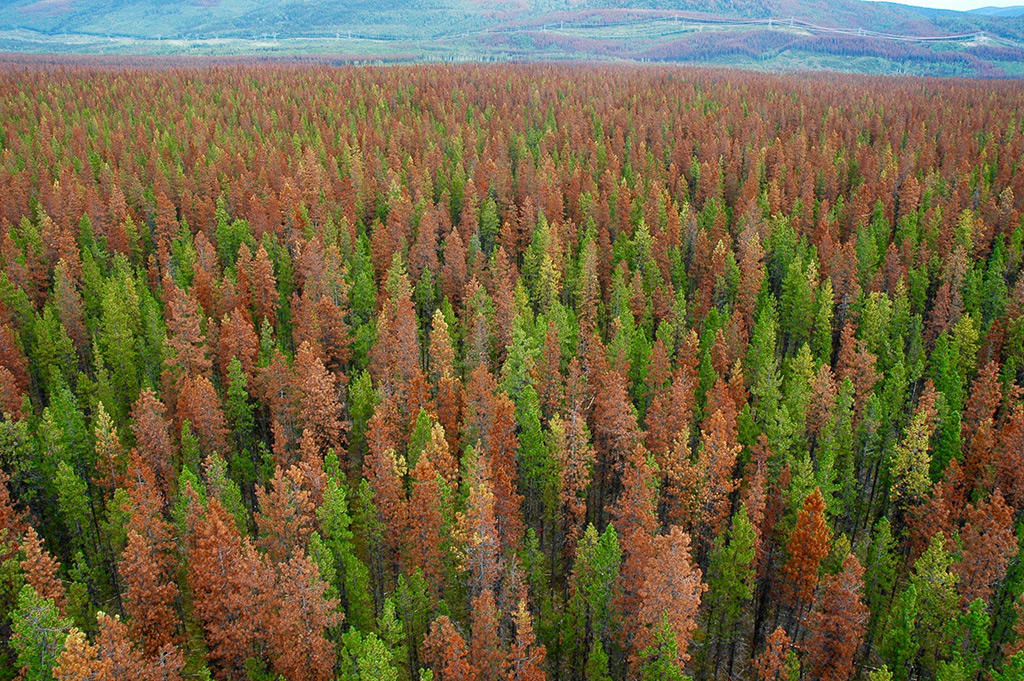
Lillooet, a town roughly 150 miles north of Vancouver, is one of the oldest inhabited areas on the continent. People have lived in the region for several thousand years. But, some of the local whitebark pines have been alive for that long.
The whitebark pine is one of the most rugged trees on the planet, surviving in extreme altitudes and conditions. It sets the treeline for many mountains across western North America, and the ecosystem it cultivates is responsible for the survival of many high-altitude species. Grizzly bears, in particular, eat the highly nutritious seeds of the whitebark pine. Unfortunately, despite its tenacity, the whitebark pine wasn’t ready for the effect of human intervention on its habitat.
The whitebark pine is currently being eradicated by two natural predators that have been unnaturally empowered by human impact. An invasive species, blister rust, made its way to the Americas on the backs of seedlings grown in European nurseries, and the whitebark pine has not adapted to resist the disease. It’s not uncommon to find groves in Canada with infection rates as severe as 80 to 90 percent.
On the other hand, mountain pine beetles are native to the Americas, but increasing temperatures have allowed them to both survive at much higher altitudes and reproduce exponentially faster. Some pines, like the lodgepole pine, can inherit beetle-resistant traits, but since the whitebark pine exists high above the historic range of mountain pine beetles, it has no natural defenses against them. More than 40 million acres of forest in British Columbia are affected by these beetles.
The importance of the whitebark pine cannot be overstated. More than just a keystone species, it is an ecosystem stabilizer. First, the whitebark pine may be the most important factor in water distribution at high altitudes. It prevents erosion with its roots and shades snowpack deep into the summer, which regulates distribution and prevents flooding. Secondly, its high-in-fat seeds are primary food sources for an incredible variety of species, including songbirds, squirrels and bears. It also shelters elk, deer, hares and birds of prey during especially inclement weather. Lastly, because their seeds are distributed by Clark’s nutcrackers, who like to bury seeds in open places, the whitebark is generally the first tree to grow back in wildfire-affected areas. This means that it is a recovery-catalyst, prompting the ecosystem to bounce back much more rapidly than it would otherwise. For these reasons the species is known as a “nurse” tree.
American Forests’ Global ReLeaf program has been working with local partners in Lillooet, British Columbia, to plant thousands of whitebark pine trees. Members of the St’at’imc First Nation (Lillooet Tribal Council) spent time collecting seeds from the healthiest whitebark pines in the surrounding area, with the idea being that their saplings would be better adapted to survive the onset of beetles and blister rust. Given that these rugged trees have been known to survive up to 5,000 years, we are hoping to benefit the locals of British Columbia for many generations to come.
Doyle Irvin contributes to American Forests magazine and Loose Leaf blog, and is passionate about protecting the environment and investing in the future of our planet.